Despite having grown up with digital cameras and selfies, young Koreans regularly turn to something that first appeared nearly 100 years ago: photo booths that produce a strip of tiny analog pictures.
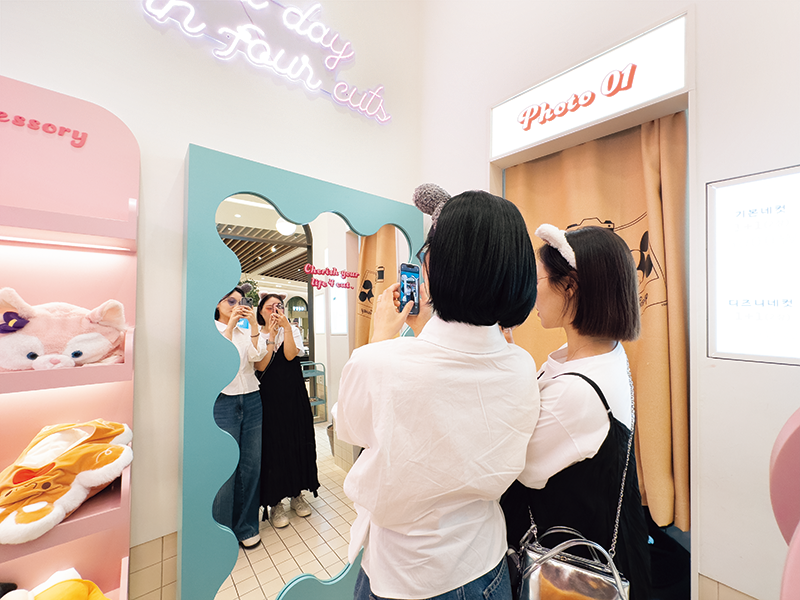
Students and young adults often wrap up their day by taking “four cut” photos of special moments with friends.
In the late 1990s, young Koreans embraced sticker photos. Couples and groups of three or four squeezed into photo booths on street corners to pose for the camera and wait for proof of their love and friendship. They tucked the images into their wallets and diaries or attached them to keychains. Sticker photos were so popular that many people scanned and posted them on Cyworld, a popular Korean social network service that far preceded Facebook and others.
With the dawn of the new millennium, digital cameras and smartphones doomed the sticker photo craze. People could capture precious moments practically anywhere and anytime, and there was no longer a need to cram into photo booths, which first appeared in New York City in the 1920s. In short, digital replaced analog. But the disappearance of analog opened a way for its eventual rediscovery.
In the eyes of Generation MZ—those born between 1981 and 2005 who came of age with computers and mobile gadgets—anything analog is synonymous with “new.” Sticker photos are in vogue, revived and labeled “life’s four cuts.” Cramming into a photo booth to produce a 4,000 won strip of four mini-size photos is now as much a part of an outing with friends as eating and drinking. Thus, MZers are known as “photopress” enthusiasts, fans of expressing themselves through photos.
Korean trends change quickly, and the fads of MZers last less time than those of their predecessors. But so far, the popularity of photopress shows no sign of waning. COVID-19 pandemic-related restrictions caused a pause, but after they ended, demand surged again.
The trend began before the pandemic, in neighborhoods known for their youthful ambience such as Hongdae and Apgujeong Rodeo Street in Seoul. MZers stood in long lines regardless of weather conditions, be it in the height of summer or the depth of winter. That caught the attention of the business community, and soon photo booths sprouted throughout Seoul and beyond.
STEADY BUSINESS
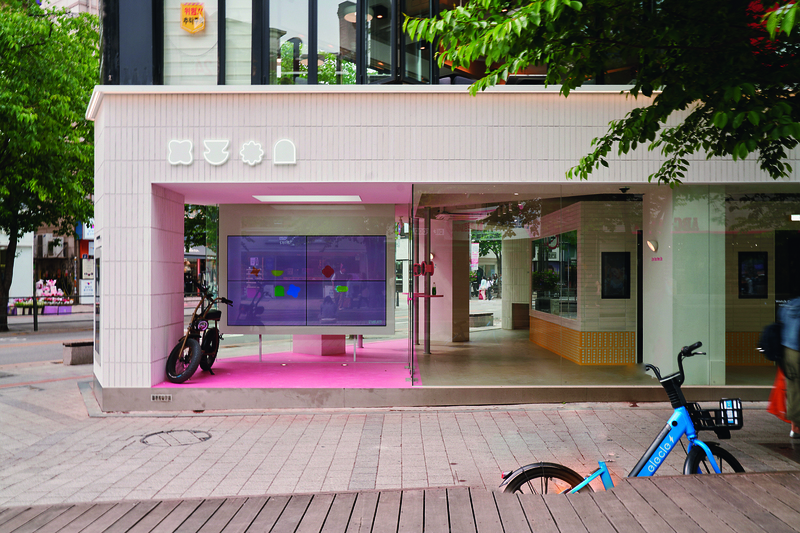
A Life4Cuts outlet in Sinchon, western Seoul, which is home to several universities. This studio has been fitted with digital signage displays, giving the impression of integrated digital technology.
© LifeFourCuts
Life4Cuts, operated by LKVENTURES, takes up the lion’s share of the photo booth market. Lee Ho-ik, the company’s CEO, got the idea from instant passport photo booths in Seoul subway stations. “It occurred to me that the sticker photo would appeal to MZers, who enjoy expressing themselves through photos and sharing a record of their activities on Instagram,” he explained.
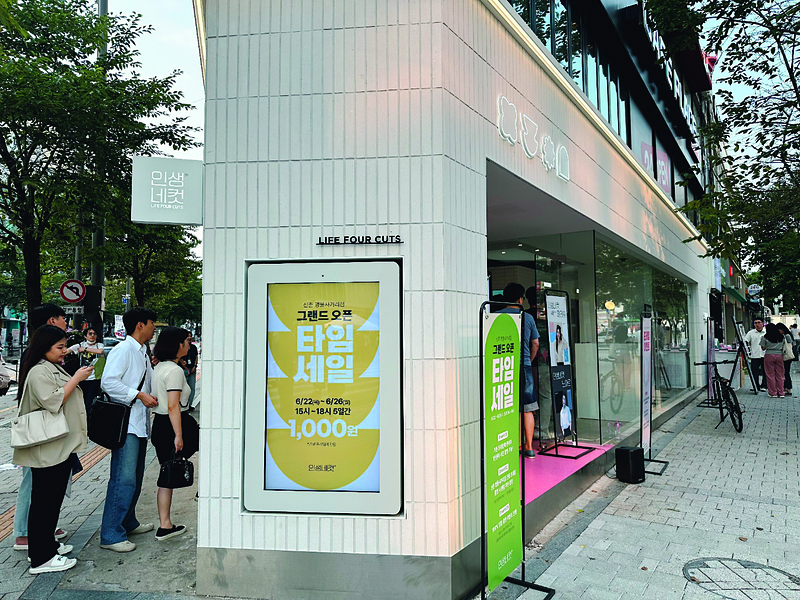
Customers line up for a sale celebrating the opening of a new Life4Cuts outlet on Myeongmul Street in Sinchon.
© LifeFourCuts
The cumulative number of sticker photos shot at Life4Cuts booths exceeded 100 million as of January 2023, five years after it launched, with 2 to 2.3 million people taking such photos on a monthly average. As of early this year, Life4Cuts had made inroads into markets in nine countries, including the UK, where a shop opened up in Soho in London’s West End. Under the brand name of “Life Four Cuts,” the company runs ads saying anyone can keep the most memorable moments in their life on a strip of mini-size photos.
The four-cut photos business has some 40 photopress brands competing in Korea. There are thousands of locations throughout the nation, ranging from standalone photo booths to elaborate shops that contain multiple booths.
Some companies have turned their sites into user-friendly playgrounds. Their locations typically contain not just the photo booths but also shelves packed with funny wigs, props, and accessories. Customers can download images from the photo machine using QR codes, so that they can later rearrange them online. It only takes about 30 seconds to print out each photo strip, which suits the taste of MZers who are enthusiastic about short memes. After making multiple photo strips, users often leave one on the wall of the shop. In addition to standalone machines, many photopress companies set up booths at pop-up shops and special exhibitions.
MIX-AND-MATCH SERVICES
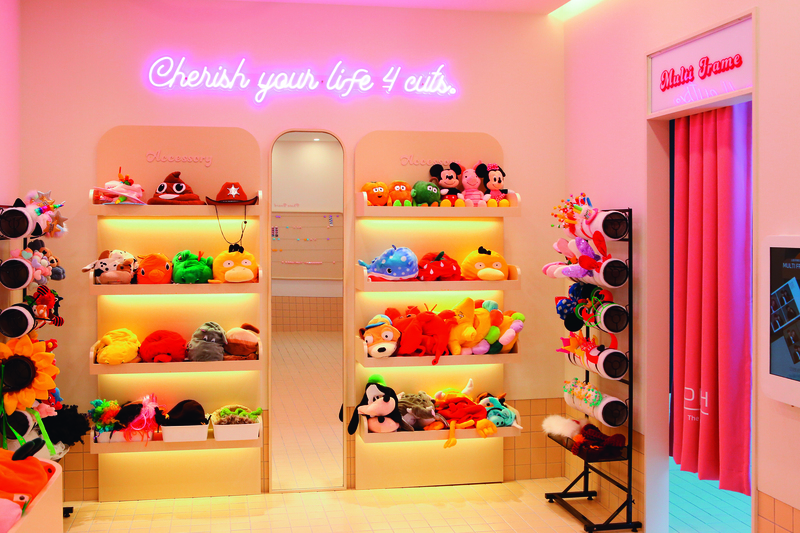
Photo booth outlets pack their shelves with funny wigs, props, and accessories for customers who want to assume an amusing persona for group pictures.
© LifeFourCuts
New innovations and technology are constantly introduced to gain a competitive edge. Enthusiastic photo booth customers regularly shop around different locations to shoot a variety of photo strips.
Mono Mansion operates machines that print photos with edges decorated with a variety of colors and designs such as waves, cherry blossoms, or lush green pastures to make customers feel as if they are on a picnic.
Movement Photo Booth provides a retrospective experience. It offers shots from many different angles, including the floor and the ceiling, whichimages that recall Korean hip-hop music videos of the 1990s.
Some brands aim for aesthetics. Photo booths by The Film provide a variety of paper for printing photos. Its transparent variety targets teens and twentysomethings, who enjoy decorating their diaries. At first, Life4Cuts only offered simple photos with basic edges, but now customers can use apps tospecial edges on their own.
Other brands follow a marketing strategy based on celebrity fandoms. They offer limited editions of edges featuring popular celebrities or characters, including images shot on their special days or anniversaries such as concerts and birthdays.
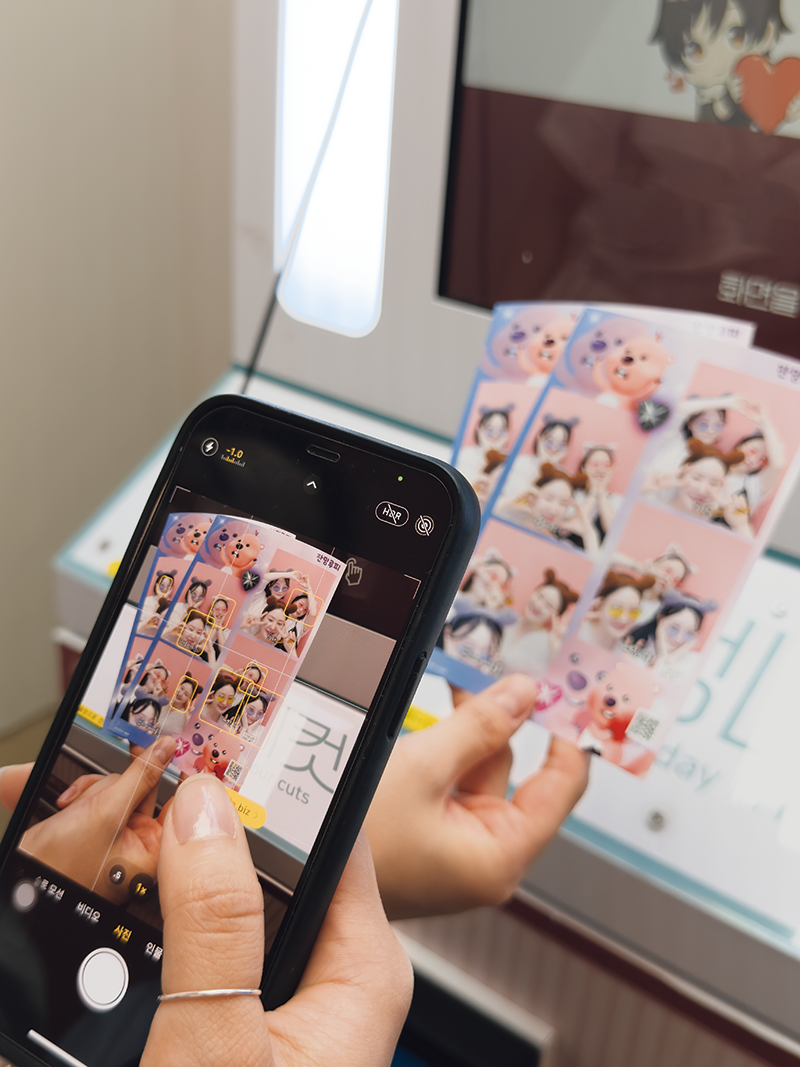
Customers can download photos and videos taken during their photo booth sessions. They can then register the material on a platform and rearrange the photos in different frames.
Entertainment agencies Big Hit Music and Source Music have also utilized photo booths in collaboration with Life4Cuts to screen applicants. Using a Life4Cuts app, male applicants used a Big Hit Music photo frame and female applicants used a Source Music photo frame when they submitted applications.
Newer photo booths can also incorporate K-pop singers into frames, so customers can take photos with their favorite idols. There are also frames allowing customers to combine photos with their favorite animation characters such as Zanmang Loopy, popular with teens and twentysomethings who grew up watching the pink beaver. Kongsuni is loved by infants and toddlers, and other popular characters include those from the TV series Secret Jouju: The Goddess of the Stars; the mobile game Cookie Run: Kingdom; and the full range of Disney movies. It is difficult to predict how long the popularity of four-cut photos will continue. It will abate but resurface again as future generations discover the fast, enjoyable way to preserve memories. Regardless of how style and technology change, people will always want to keep fond memories of unforgettable moments and loved ones alive forever.
Kim Bo-ra Reporter, The Korea Economic Daily